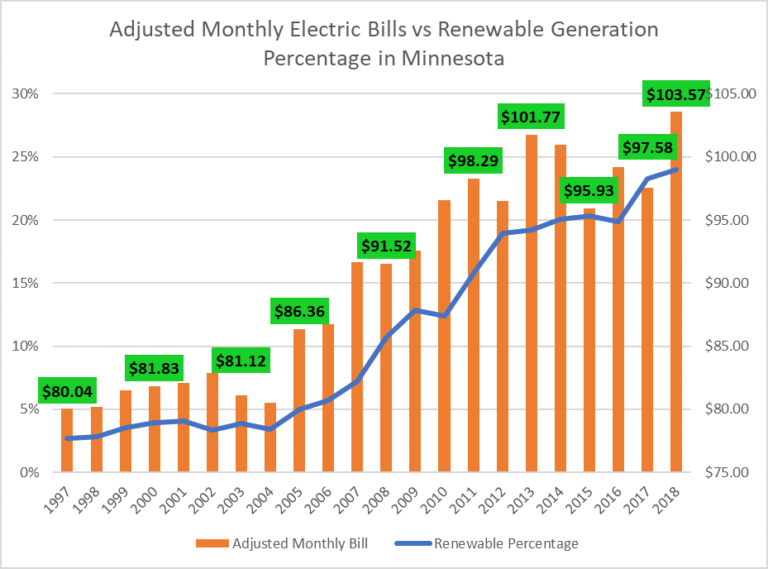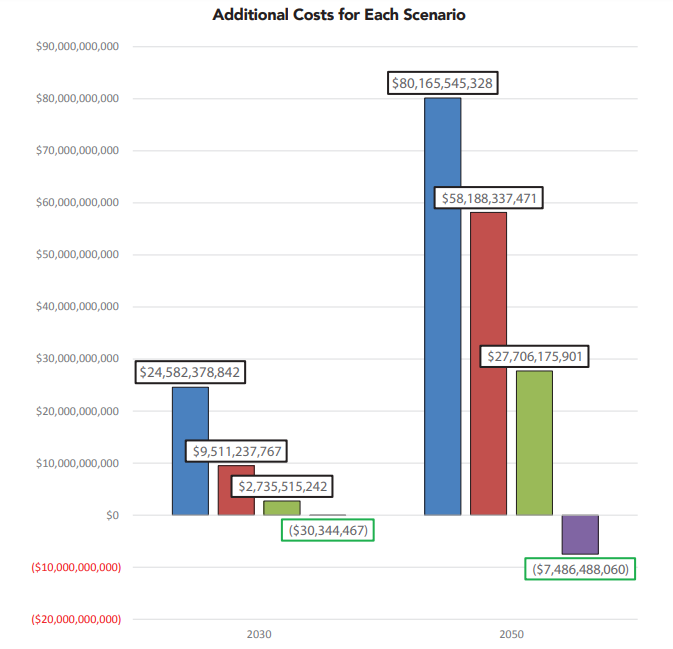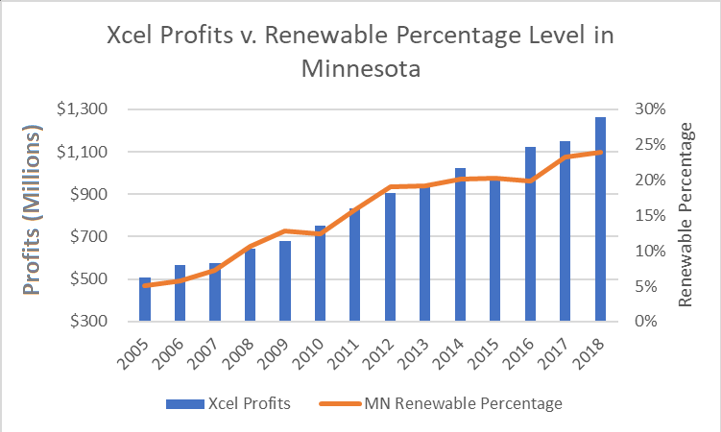Isaac Orr: Minnesota’s High Electric Bills Will Continue to Rise Higher
This article originally appeared in today’s Pioneer Press. The version below is the same text, but with graphics added.
Xcel Energy recently unveiled its plan to prematurely retire its coal plants and replace them with billions of dollars’ worth of wind, solar, and most importantly, natural gas. Unfortunately, Xcel’s plan will constitute a large increase in electricity costs for Minnesota families, businesses and schools, and these costs would far exceed any potential environmental benefit.
Many people may not realize that Minnesota residential electric bills reached a new all-time high in 2018. In fact, these bills exceeded $103 per month for the first time ever according to the latest federal data.
Xcel often advertises that electricity bills for their Minnesota residential customers were 22 percent below the national average in 2017, but they never once mention that these customers used 41 percent less electricity than the national average, according to 2017 data. Hence, the ads are misleading, at best.
Xcel’s plan would increase costs because, at its core, the plan is the very embodiment of planned obsolescence. The National Renewable Energy Lab states wind turbines last only 20 years, and solar panels last for only 25 to 30 years. This means every wind turbine and solar panel built today will be scrap metal by 2050, the year Xcel claims they will become “100 percent carbon free,” and Minnesota residents will be forced to pay for their replacements.
Furthermore, Xcel’s plan to close their coal plants a decade early and replace them with the equivalent of three new large natural gas power plants, which would have to be retired by 2050 to reach their carbon-free goals, is equally wasteful and irresponsible to ratepayers.
Many renewable energy advocates would likely agree that wind and solar have caused electricity bills to climb, but argue the costs have been worth it. However, they would be incorrect.
The Minnesota Public Utilities Commission estimates the “cost” of carbon dioxide emissions to be between $8.85 and $41.56 per ton for 2019, but since 2007, Minnesota has spent more than $15 billion to support wind and solar, and reduced our CO2 emissions by approximately 50.8 million metric tons through 2017, a cost of $295 per ton.
In other words, we have lost between $253 and $280 per ton of CO2 reduced. Clearly, the costs are not worth the benefits.
Complaining without proposing a solution is called whining, so what would be a better alternative? Maintaining our existing coal fleet through the end of their useful lifetimes, the end of the 2030s, and gradually replacing them with nuclear and large hydroelectric power.
In March, Center of the American Experiment released a study showing that legalizing new nuclear plants would cost roughly three times less than relying on wind, solar and natural gas, and this plan would likely cost even less if large hydroelectric power were allowed to be purchased to meet carbon free goals.
Nuclear and hydro are superior to wind and solar because they can generate carbon-dioxide-free power around the clock, 365 days a year and do not require natural gas backup. Furthermore nuclear plants can operate for up to 80 years, and hydroelectric dams built in the 1930s are still churning out power today. The first New Deal was actually very green.
This strategy would constitute the lowest-cost pathway for Xcel to meet its carbon-free goals because coal is still the lowest-cost source of electricity in Minnesota. For example,Xcel’s Sherburne County and A.S. King coal-fired power plants generated electricity for $31.37 per megawatt hour (MWh) and $36.83 per MWh in 2018, respectively, according Federal Energy Regulatory Commission (FERC) data.
In contrast, Xcel expects wind to cost $38.61 per MWh and solar to cost $49.48 per MWh by 2023, when federal subsidies for these two forms of energy expire. Even these costs are not an appropriate apples-to-apples comparison because they do not include the large costs associated with maintaining and using natural gas plants to “fill in the gaps” when the wind isn’t blowing or the sun isn’t shining.
Why would Xcel opt for wind and solar, rather than nuclear and large hydro? It boils down to incentives. Many people don’t realize that Xcel is not really a private company; it is a government-approved monopoly utility that is guaranteed to make a 7.5 percent profit on every dollar it spends on infrastructure, such as wind turbines, solar panels and gas natural plants.
Therefore, the incentive is to be as inefficient as possible, because the more they spend, the more they earn, and you as a consumer are forced by the government to buy your electricity from them at inflated prices. This how Xcel managed to grow their corporate profits from $600 million in 2007 to more than $1.2 billion in 2018 as they have invested heavily in wind and solar.
Unfortunately, Xcel’s plan will result in Minnesota families getting taken to the cleaners by “clean” energy.
Isaac Orr is a policy fellow specializing in energy and environmental policy at Center of the American Experiment, a think tank located in Golden Valley, Minnesota.



